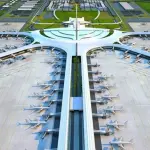Explore Our Exciting New Property Listings!
View Now →Driving in the Philippines can be an essential part of daily life, especially if you’re planning a long-term stay or living in areas with limited public transportation. For expats or foreign visitors, converting your foreign driving license to a Philippine driver’s license is a straightforward process. Here’s everything you need to know.
Who Needs to Convert Their License?
Foreign nationals can drive in the Philippines using their valid foreign driver’s license or an International Driving Permit (IDP) for up to 90 days after arrival. Beyond this period, you’ll need to convert your license to a Philippine driver’s license if you wish to continue driving legally.
Requirements for Conversion
To convert your foreign driving license, you’ll need the following documents:
- Original Foreign Driver’s License
- Must be valid and in English. If not in English, you’ll need an official translation from your embassy or consulate.
- Visa and Passport
- Present your original passport with a valid visa or ACR I-Card (Alien Certificate of Registration) for non-tourists.
- Medical Certificate
- Obtain a medical certificate from a Land Transportation Office (LTO) accredited clinic. This confirms that you are physically and mentally fit to drive.
- Proof of Residency
- Any document showing your local address, such as a utility bill, lease agreement, or barangay clearance.
- Application Form
- The LTO Driver’s License Application Form, which can be filled out at the LTO office.
- Photocopies of Documents
- Bring photocopies of your passport, visa, foreign driver’s license, and other required documents.
Step-by-Step Process
Visit an LTO Office
Locate your nearest Land Transportation Office (LTO) branch . Major branches in Metro Manila and other urban centers handle license conversions.
Submit Your Documents
Provide the required documents to the licensing counter. Ensure all photocopies are clear and complete.
Undergo a Medical Examination
Proceed to an accredited medical clinic within or near the LTO office. You’ll need to:
- Pay a small fee (typically PHP 500 to PHP 1,000).
- Undergo a basic physical examination.
Written Examination (if applicable)
Some applicants may be required to take a written examination, depending on the validity and recognition of their foreign license. Study the Philippine driving rules and road signs in advance.
Practical Driving Test (if applicable)
If your license is not exempt, you may need to complete a practical driving test to demonstrate your skills.
Pay the Fees
Pay the processing fees at the cashier. The cost typically includes:
- Conversion fee: PHP 800 to PHP 1,200
- Application fee: PHP 100
- Additional fees for tests, if required
License Issuance
After successfully completing all steps, you’ll receive your Philippine driver’s license. This is typically valid for five years.
Tips for a Smooth Process
- Arrive Early: LTO offices can be crowded, so arrive early to avoid long waiting times.
- Be Patient: Processing times vary depending on the branch and the volume of applicants.
- Study Rules: Familiarize yourself with local driving laws to prepare for potential exams.
- Bring Extra Cash: Fees and other expenses can add up, so bring sufficient money for the process.
FAQs
Can I drive with my foreign license beyond 90 days?
No, foreign licenses are only valid for 90 days after arrival. After that, you must convert it to a Philippine driver’s license.
What if my foreign license has expired?
You cannot convert an expired license. You will need to apply for a new non-professional or professional driver’s license in the Philippines.
Is the International Driving Permit (IDP) valid?
Yes, but only for 90 days. After this period, you need to convert to a local license.
Related posts:
The Philippines has launched its Digital Nomad Visa, a transformative opportunity for remote workers to live legally and work freely across the islands. Here’s how it works — and why it could change your life (or your investment strategy).
Easily extend your Philippine tourist visa online in just a few minutes. Learn the step-by-step process, costs, and payment options for renewing your EO408 - 30 DAYS visa waiver hassle-free.


 JUTC New Buses in 2025
JUTC New Buses in 2025
 New Manila International Airport
New Manila International Airport
 The New Nomad Visa for the Philippines
The New Nomad Visa for the Philippines
 How to Renew Your Philippine Tourist Visa Online (EO408 - 30 DAYS)
How to Renew Your Philippine Tourist Visa Online (EO408 - 30 DAYS)
 9 Essential Things To Do, Before Arriving in the Philippines
9 Essential Things To Do, Before Arriving in the Philippines